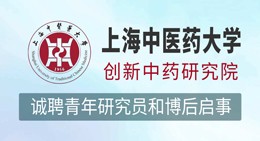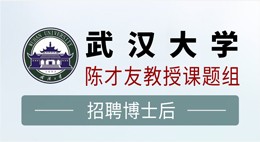当前位置:
X-MOL 学术
›
BMC Pregnancy Childbirth
›
论文详情
Our official English website, www.x-mol.net, welcomes your
feedback! (Note: you will need to create a separate account there.)
Socioeconomic and migration status as predictors of emergency caesarean section: a birth cohort study.
BMC Pregnancy and Childbirth ( IF 2.8 ) Pub Date : 2020-01-13 , DOI: 10.1186/s12884-020-2725-5 C Miani 1 , A Ludwig 1 , J Breckenkamp 1 , O Sauzet 1, 2 , I-M Doyle 1, 3 , C Hoeller-Holtrichter 1 , J Spallek 4 , O Razum 1
BMC Pregnancy and Childbirth ( IF 2.8 ) Pub Date : 2020-01-13 , DOI: 10.1186/s12884-020-2725-5 C Miani 1 , A Ludwig 1 , J Breckenkamp 1 , O Sauzet 1, 2 , I-M Doyle 1, 3 , C Hoeller-Holtrichter 1 , J Spallek 4 , O Razum 1
Affiliation
BACKGROUND
Women with a migration background are reportedly at a higher risk of emergency caesarean section. There is evidence that this is due in part to suboptimal antenatal care use and quality of care. Despite the fact that migrant women and descendants of migrants are often at risk of socioeconomic disadvantage, there is, in comparison, scarce and incomplete evidence on the role of socioeconomic position as an independent risk factor for emergency caesarean delivery. We therefore investigate whether and how migration background and two markers of socioeconomic position affect the risk of an emergency caesarean section and whether they interact with each other.
METHODS
In 2013-2016, we recruited women during the perinatal period in Bielefeld, Germany, collecting data on health and socioeconomic and migration background, as well as routine perinatal data. We studied associations between migration background (1st generation migrant, 2nd/3rd generation woman, no migration background), socioeconomic status (educational attainment and net monthly household income), and the outcome emergency caesarean section.
RESULTS
Of the 881 participants, 21% (n = 185) had an emergency caesarean section. Analyses showed no association between having an emergency caesarean section and migration status or education. Women in the lowest (< 800€/month) and second lowest (between 800 and 1750€/month) income categories were more likely (aOR: 1.96, CI: 1.01-3.81; and aOR: 2.36, CI: 1.27-4.40, respectively) to undergo an emergency caesarean section than women in the higher income groups.
CONCLUSIONS
Migration status and education did not explain heterogeneity in mode of birth. Having a low household income, however, increased the chances of emergency caesarean section and thereby contributed towards producing health disadvantages. Awareness of these findings and measures to correct these inequalities could help to improve the quality of obstetric care.
中文翻译:

社会经济和移民状况作为紧急剖腹产的预测因素:一项出生队列研究。
背景技术据报道,具有移民背景的妇女紧急剖腹产的风险较高。有证据表明,这部分归因于产前护理使用和护理质量欠佳。尽管事实上移徙妇女和移徙者的后代往往处于社会经济不利地位的风险,但相比之下,关于社会经济地位作为紧急剖腹产的独立危险因素的作用的证据很少且不完整。因此,我们调查了移民背景和社会经济地位的两个指标是否以及如何影响紧急剖腹产的风险以及它们是否相互影响。方法2013-2016年,我们在德国比勒费尔德(Bielefeld)围产期招募了女性,收集有关健康,社会经济和移民背景的数据,以及常规的围产期数据。我们研究了移民背景(第一代移民,第二代/第三代妇女,没有移民背景),社会经济状况(教育程度和家庭月净收入)与紧急情况剖腹产之间的关联。结果在881名参与者中,有21%(n = 185)进行了紧急剖腹产。分析表明,进行紧急剖腹产与移民状况或受教育程度之间没有关联。收入最低(<800欧元/月)和第二低(800至1750欧元/月)的女性更有可能(aOR:1.96,CI:1.01-3.81; aOR:2.36,CI:1.27-4.40,分别比收入较高的女性进行紧急剖腹产。结论移民状况和受教育程度不能解释出生方式的异质性。然而,家庭收入较低,增加了紧急剖腹产的机会,从而加剧了对健康的不利影响。了解这些发现和纠正这些不平等的措施可以帮助提高产科护理质量。
更新日期:2020-01-14
中文翻译:

社会经济和移民状况作为紧急剖腹产的预测因素:一项出生队列研究。
背景技术据报道,具有移民背景的妇女紧急剖腹产的风险较高。有证据表明,这部分归因于产前护理使用和护理质量欠佳。尽管事实上移徙妇女和移徙者的后代往往处于社会经济不利地位的风险,但相比之下,关于社会经济地位作为紧急剖腹产的独立危险因素的作用的证据很少且不完整。因此,我们调查了移民背景和社会经济地位的两个指标是否以及如何影响紧急剖腹产的风险以及它们是否相互影响。方法2013-2016年,我们在德国比勒费尔德(Bielefeld)围产期招募了女性,收集有关健康,社会经济和移民背景的数据,以及常规的围产期数据。我们研究了移民背景(第一代移民,第二代/第三代妇女,没有移民背景),社会经济状况(教育程度和家庭月净收入)与紧急情况剖腹产之间的关联。结果在881名参与者中,有21%(n = 185)进行了紧急剖腹产。分析表明,进行紧急剖腹产与移民状况或受教育程度之间没有关联。收入最低(<800欧元/月)和第二低(800至1750欧元/月)的女性更有可能(aOR:1.96,CI:1.01-3.81; aOR:2.36,CI:1.27-4.40,分别比收入较高的女性进行紧急剖腹产。结论移民状况和受教育程度不能解释出生方式的异质性。然而,家庭收入较低,增加了紧急剖腹产的机会,从而加剧了对健康的不利影响。了解这些发现和纠正这些不平等的措施可以帮助提高产科护理质量。







































 京公网安备 11010802027423号
京公网安备 11010802027423号